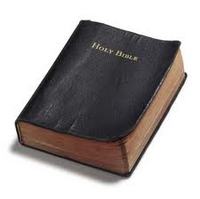We know much more about the
formation of the New Testament than the Old. These 27 books–a combination of
Gospels, history, letters, sermons, and an apocalypse–were written between 50
and 100 AD, or thereabouts. The earliest of the New Testament books were Paul’s
letters. These were written in the 50’s and 60’s. Paul’s letters were written
to specific churches experiencing specific problems, and they very rarely
reference in detail stories about Jesus. When they were written, people who
knew Jesus personally were still alive, and as a result the basic stories about
Jesus’ ministry, his death and his resurrection were widely known and easy to
pass along. As the first generation of Christians began to die, however,
believers recognized that they needed the memory of Jesus preserved in written
form. Over the course of anywhere from 65 to 100 AD (and perhaps earlier), what
we now know as the four Gospels and Acts were written in order to record these
stories for future generations of Christian believers.
At the same time that the
books we now consider Scripture were written, other Christian documents were written
that were not deemed Scripture. For example, we know that Paul wrote more than
two letters to the Church in Corinth, and yet only two have been canonized. We
also have copies of books like the Shepherd
of Herma and the Gospel of Peter
and the Didache, or teachings. Many
of these books were used by early Christians but did not make it into the canon
of Scripture. All of which raises the question for us: so what makes it
Scripture?
There were three criteria
for inclusion in the canon of Scripture that we now call the New Testament: Apostolicity, Orthodoxy, and Catholicity.
Apostolicity means that every book of the New Testament was linked to the authority that Jesus gave to the apostles. Some books were written directly by apostles (Paul’s letters, for instance). Others were seen as having apostolic authority because they were written by people who knew the apostles or developed a line of thought that was consistent with apostolic teaching. We don’t know who wrote the book of Hebrews, but the early Christians recognized it as being in keeping with apostolic teaching.
The second criterion for canonical status was orthodoxy. The word orthodoxy has Greek roots meaning “right doctrine.” Webster’s dictionary defines the word orthodox as “conforming to established doctrine especially in religion.” These books needed to conform to the memory of Jesus’ teaching, his life, death, and resurrection, and the continued knowledge of the Spirit’s presence. These books needed to reflect the redemptive history that repeats itself throughout the Bible. To cite one example, in 190 the Bishop of Antioch approved the Gospel of Peter until he learned that it was being used to support teaching that Jesus was not truly human. In other words, the Gospel of Peter was used to promote non-orthodox statements, and as a result, it, along with other Gospels, did not make it into the canon.
Historical forces drove church leaders to identify and define the canon of Scripture. A man named Marcion (100-160) forced the issue early on. He taught that the God of the Old Testament was a different God from Jesus’ God. He saw the Old Testament God as a strict God without grace, and as a result he rejected the Old Testament canon altogether. In addition, he rejected New Testament books that referred to the Old Testament, such as the Gospel of Matthew and the Book of James, and he created his own “canon” of a smaller group of books. He even eliminated certain chapters of Luke that he didn’t like. When Marcion essentially created his own canon, he forced other church leaders to respond. Their response was a decisive one. They acknowledged the importance of the OT canon as well as the four Gospels and the diverse Epistles of both James and Paul. Unlike Marcion, they understood that an orthodox faith was still a diverse and inclusive faith.
The final criterion for inclusion in the canon was Catholicity. By this I do not refer to the Roman Catholic church, but to the idea of catholic as “comprehensive” or “universal.” In other words, the documents that early Christians recognized as canonical needed to be agreed upon by many local churches as orthodox in their theology as well as useful and relevant to the ongoing life of the church. Some books did not survive. Again, we know that Paul wrote letters that did not make it into the canon. They “died,” so to speak. These books certainly had apostolic authority and orthodox theology, but they did not have the catholic appeal, that is, they were not deemed useful and relevant for diverse groups of Christians over time.
As a side note, these three criterion–apostolicity, orthodoxy, and catholicity–help us to understand why the “Gospels” that have been discovered in recent years were not deemed canonical. Although they may hold interesting information about some of the early Christian communities, they nonetheless failed to meet all of these measures as what should be passed along to future generations of Christians.
It was not until the late 4th century that there was across-the-board agreement on a canon of 27 works. This seems like a very long process, but we know that as early as 96 AD, Bishop of Clement of Rome was writing letters that indicated his knowledge of the Gospels, Paul’s letters, and the Book of Hebrews. This “core canon” of the New Testament established itself very quickly, and between Marcion and other early Christian movements like Gnosticism, most of the rest of the canon worked itself out through the community of faith over the next century. As Raymond Brown writes, “We shall never know all the details of how the 27 books were written, preserved, selected, and collected; but one fact is indisputable. Joined as the New Testament, they have been the single most important instrument in bringing untold millions of people from different times and places into contact with Jesus of Nazareth and the first believers who proclaimed him.”
The Book of Hebrews says that “God’s word is living and active,” (Hebrews 4:12) and God’s Word does continue to change and shape individuals and Christian communities seeking to know and follow Jesus. The bottom line is this: God has been revealing Himself to human beings over the course of thousands of years. And he ultimately chose to reveal himself in the person of Jesus Christ. The Bible–all 66 books of it–is the record of God’s self-revelation to particular people in particular situations, but it is also the living and active w
ord of God for us today. We can’t answer all our questions, but what we can know about the Bible, and about all the books within it, is that it is the record of God’s work throughout human history, centered on Jesus, telling a consistent and unified story of a God who created us, allowed us to fall away from Him, and is at work even now to draw us and all of creation back into His presence.


